A guide to Kathmandu

Transportation
Swayambhunath Stupa
To visit Swayambhunath Stupa, commonly known as the Monkey Temple, you can start from the city center of Kathmandu. The temple is situated atop a hill, and it's easily accessible by taxi, local bus, or even on foot for those who enjoy a brisk hike. The walk up the hill is a part of the experience, with 365 steps leading to the temple, offering a spiritual journey. As you make your way up the steps watch out for the monkeys, they rarely interact with people, just don't get too close to any of their babies and keep your possessions in your bag.
At the entrance, there might be a small fee for tourists, so it's advisable to carry some local currency. The stupa itself is a magnificent example of Nepalese architecture and religious art, featuring the iconic Buddha eyes and numerous shrines and statues.
One of the main attractions is the panoramic view of Kathmandu Valley from the top. Photography is allowed, but it's respectful to avoid taking pictures of monks or worshippers without permission.
The best time to visit is early morning or late afternoon to avoid the midday sun and to experience the serene ambiance during prayer times. Remember to take water and wear comfortable shoes for the climb.
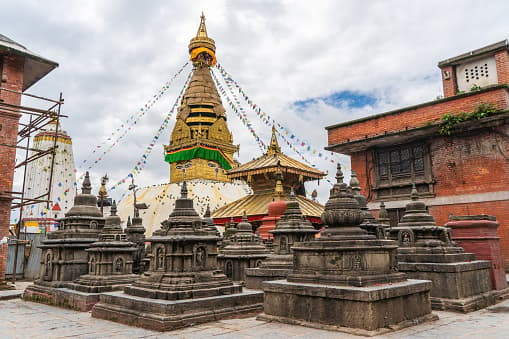
Boudhanath Stupa
Boudhanath Stupa, one of the largest and most significant Buddhist stupas in the world, is located in the Boudha area of Kathmandu, Nepal. To get there, you can take a taxi or a local bus from central Kathmandu, which is a relatively straightforward and affordable option. The stupa is accessible throughout the day, with a small entrance fee for foreign visitors, usually collected at the gate.
Upon entering, visitors are greeted by the impressive sight of the massive stupa, notable for its giant mandala and the all-seeing eyes of Buddha on all four sides. The area around Boudhanath is a vibrant hub of Nepalese culture, filled with monasteries, meditation centers, and shops selling religious artifacts and Nepalese crafts. Walking around the stupa in a clockwise direction is a common practice, often accompanied by the spinning of prayer wheels.
Boudhanath is not only a tourist attraction but also a significant religious site for Buddhists. Also, be aware of your belongings, as crowded places can attract pickpockets. Lastly, while the atmosphere is generally peaceful.
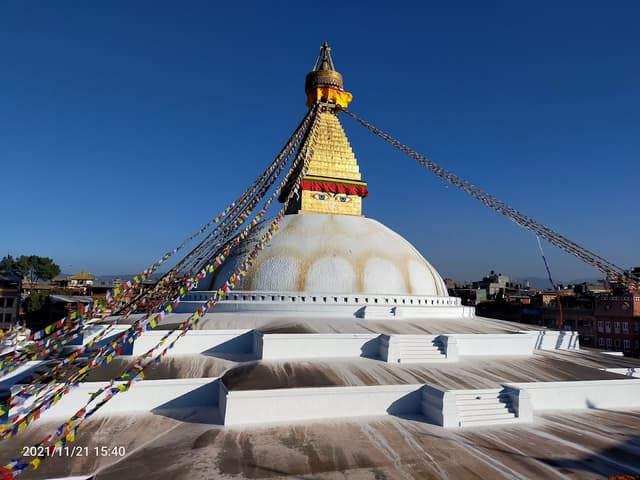
Pashupatinath Temple
Pashupatinath Temple, a sacred Hindu temple dedicated to Lord Shiva, is situated on the banks of the Bagmati River on the eastern outskirts of Kathmandu, Nepal. To get there, you can take a taxi or a local bus from central Kathmandu. The temple complex is open to visitors throughout the day, but non-Hindus are not allowed inside the main temple. There is an entrance fee for foreign visitors, typically paid at the main gate
The temple complex is a sprawling collection of temples, ashrams, images, and inscriptions raised over the centuries along the banks of the sacred Bagmati River. One of the most fascinating and solemn aspects of Pashupatinath is the ritual of cremations that take place openly along the river. Visitors can witness these ceremonies from across the river, but it's important to maintain a respectful distance and demeanor.
Photography is often restricted, especially near the cremation areas, so it's prudent to ask for permission before taking pictures. Additionally, beware of monkeys and keep your belongings secure, as they can be quite mischievous.

Kathmandu Durbar Square
Kathmandu Durbar Square, a UNESCO World Heritage Site located in the heart of Kathmandu, is easily accessible from various parts of the city. The most convenient way to reach it is by taxi, rickshaw, or a local bus, which drops you close to the square. For those staying in the Thamel area, it's a pleasant and short walk. An entrance fee is required for foreign visitors, which can be paid at the ticket counter near the entrance.
Durbar Square is a historical marvel, showcasing a stunning array of temples, palaces, courtyards, and statues, dating back to the Malla and Shah dynasties. Key attractions include the Hanuman Dhoka Palace, the Kumari Ghar (home to the living goddess Kumari), and the Kasthamandap, from which Kathmandu derives its name. Each monument and temple has its own unique architectural and historical significance.
While exploring, be mindful of ongoing restoration work, as some areas might still be recovering from damage caused by the 2015 earthquake. Respect the cultural heritage by not climbing on the monuments and being considerate in religious spaces. Photography is generally allowed, but it's polite to ask for permission before taking pictures of people, especially the Kumari. As in any crowded tourist spot, be vigilant about your belongings to avoid pickpockets.
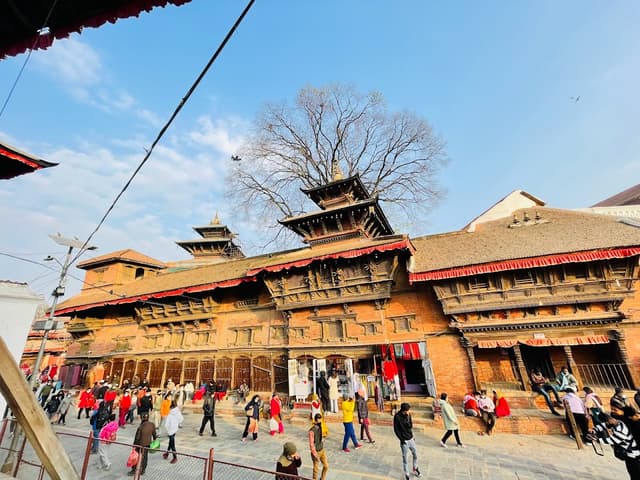
Thamel
Thamel, the bustling tourist hub of Kathmandu, is conveniently located and easily accessible from various parts of the city. You can get there by taxi or rickshaw from almost anywhere in Kathmandu, including the Tribhuvan International Airport. As a popular tourist destination, Thamel doesn't require an entrance fee.
Thamel is known for its vibrant streets filled with shops, restaurants, bars, and hotels, catering to every need and budget. The area is a great place to shop for souvenirs, trekking gear, traditional handicrafts, and local artworks. Besides shopping, Thamel offers a wide range of eateries, from traditional Nepalese and Tibetan cuisine to international flavors. The area is also known for its lively nightlife with numerous bars and live music venues.
Be prepared for busy streets and occasional traffic congestion. Bargaining is common in shops, so don't hesitate to negotiate prices. Additionally, it's a good idea to have a map or a GPS-enabled device as the maze of streets in Thamel can be confusing for first-time visitors.

Narayanhiti Palace Museum
Narayanhiti Palace Museum, once the royal palace of the Shah Kings of Nepal, is located in the heart of Kathmandu, near the popular tourist district of Thamel. To reach Narayanhiti Palace Museum, you can take a taxi, which is the most convenient option,. The museum is within walking distance from areas like Thamel and Durbar Marg, making it easily accessible for those staying in central Kathmandu.
Upon arrival, visitors can purchase tickets at the entrance. The museum showcases the history and lifestyle of Nepal’s monarchy, which ended in 2008. Inside, you can explore the royal chambers, banquet halls, and the throne room, each offering a glimpse into the country's past. The transition from a royal palace to a public museum has made the palace's architecture and the artifacts within significant points of interest.
While photography inside the museum is usually restricted, the exterior and the palace gardens make for great photos. Visitors should dress modestly and behave respectfully, as the palace is a site of historical and cultural importance.
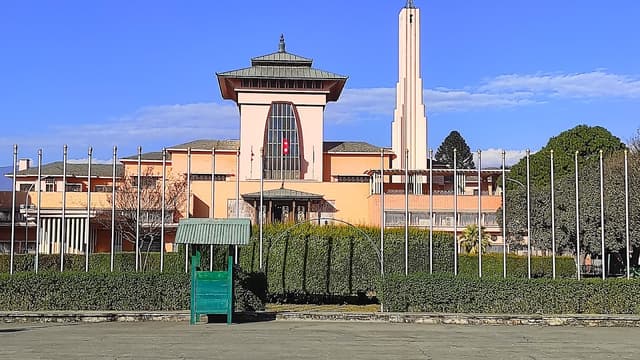
Kopan Monastery
Kopan Monastery, a serene Tibetan Buddhist monastery situated on the outskirts of Kathmandu, can be reached by taking a taxi from the city center. The monastery, known for its meditation retreats and teachings on Buddhism, is located atop a hill, offering stunning views of the Kathmandu valley.
Visitors can enter the monastery grounds for free or for a small donation. The monastery's main attraction is its beautiful main temple, adorned with intricate Buddhist paintings and statues. The peaceful environment is ideal for meditation or quiet reflection. Kopan also offers courses and retreats for those interested in learning more about Buddhism and meditation, although these usually require prior booking and come with their own fees.
When visiting, it's important to dress modestly and behave respectfully, as Kopan is an active religious site with monks in residence. Photography inside the main temple may be restricted, so it's best to ask for permission. The grounds are quite extensive, so wearing comfortable shoes is advisable.

Where to stay
If you are looking for a luxury stay to relax after exploring all Kathmandu has to offer consider staying at the Baber Mahal Vilas. The Hotel has a range of facilities and the room cost normally also includes breakfast
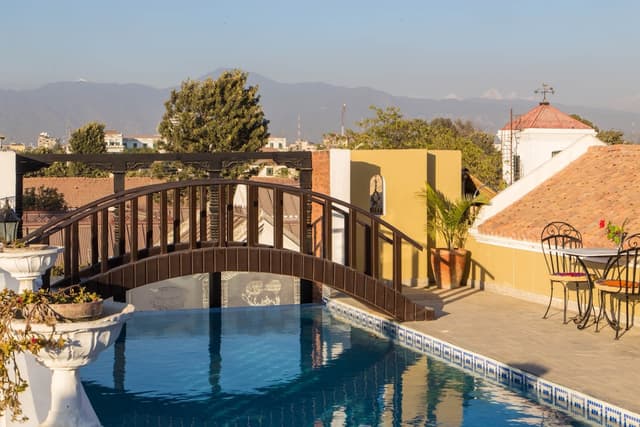

If you are looking for something in the middle, how about Kumari Boutique Hotel, located a 15 minute walk from Thamel and surrounded by a wide range of cafes and restaurants.

The home for unique & authentic travel